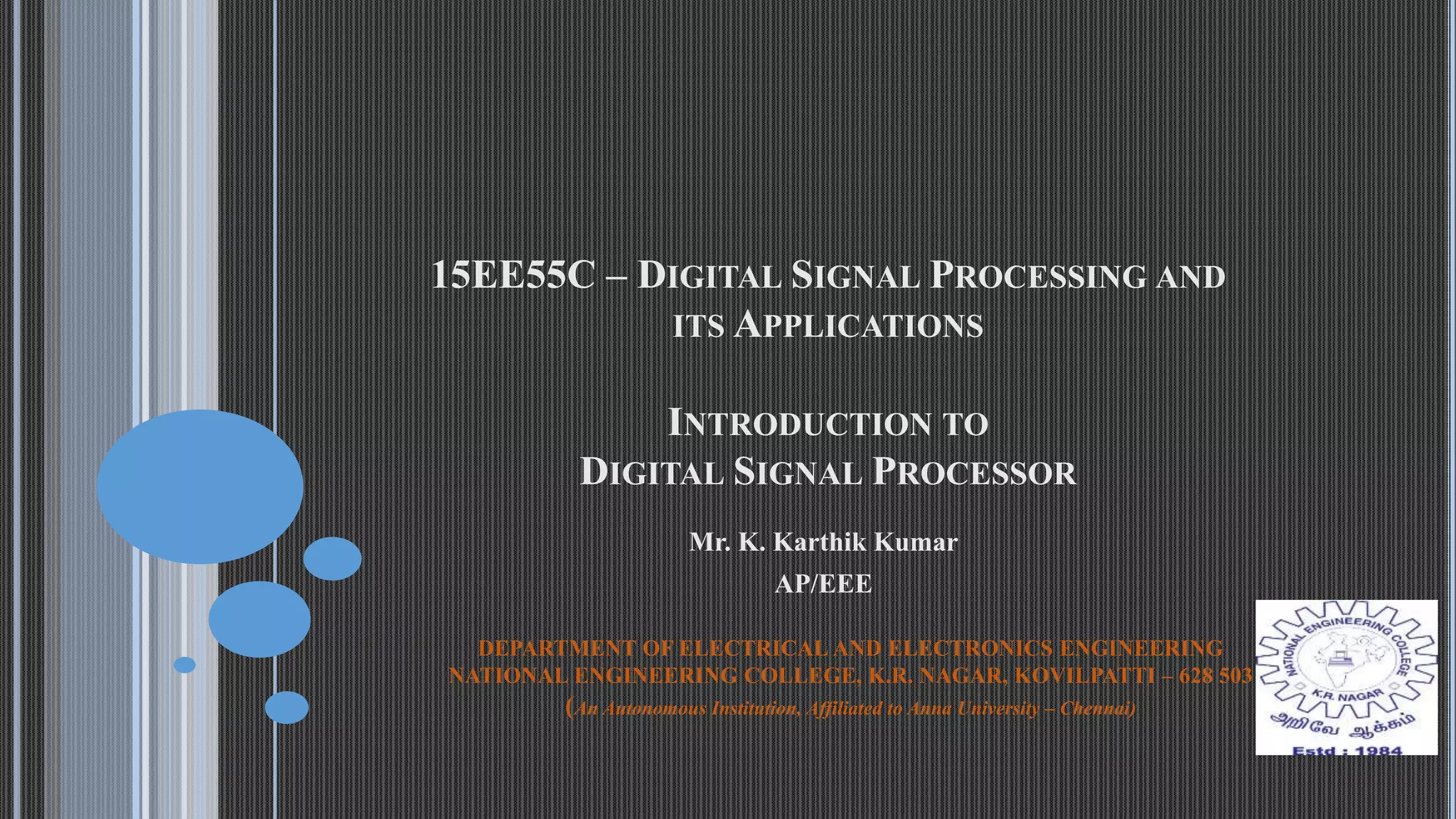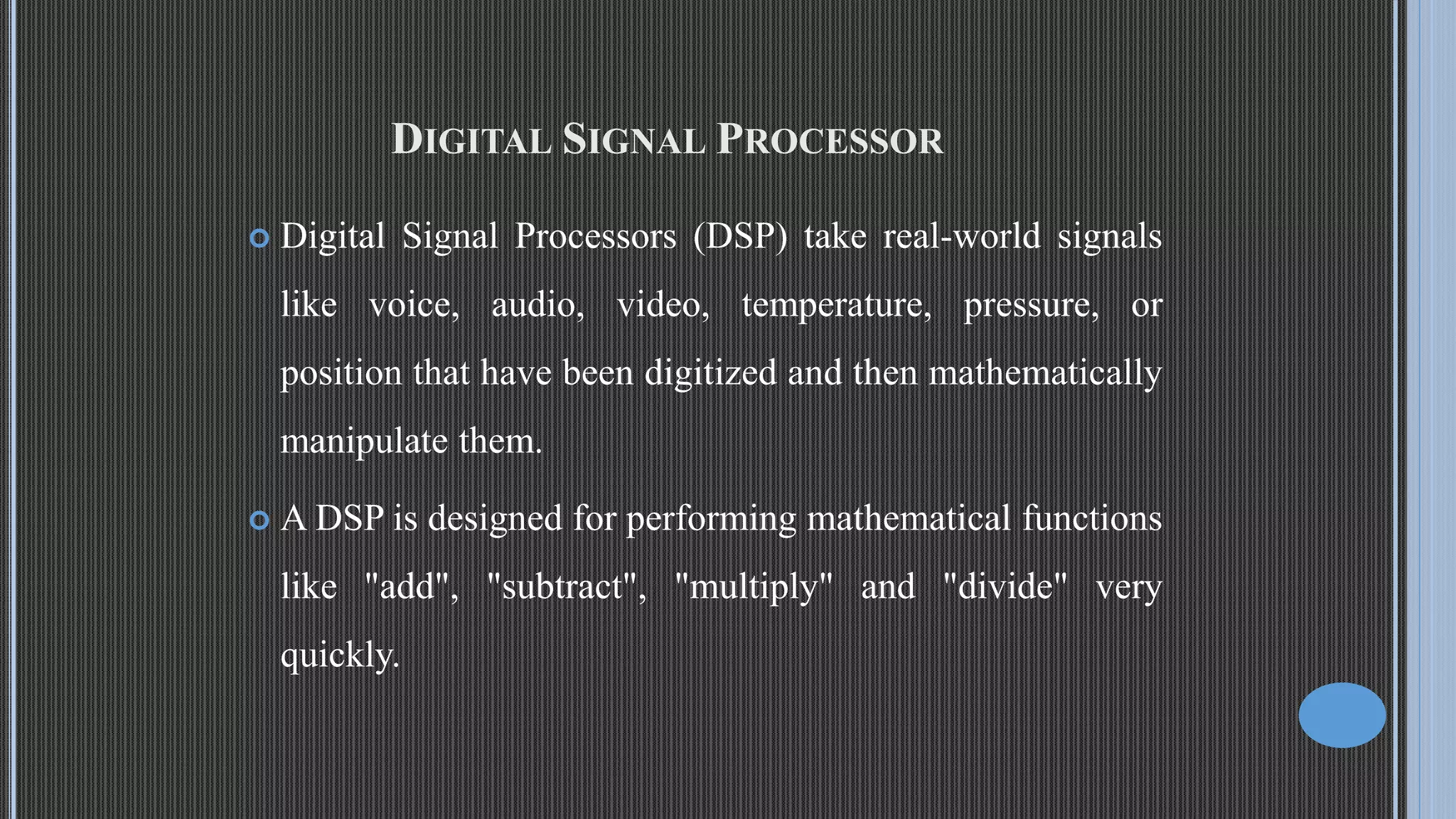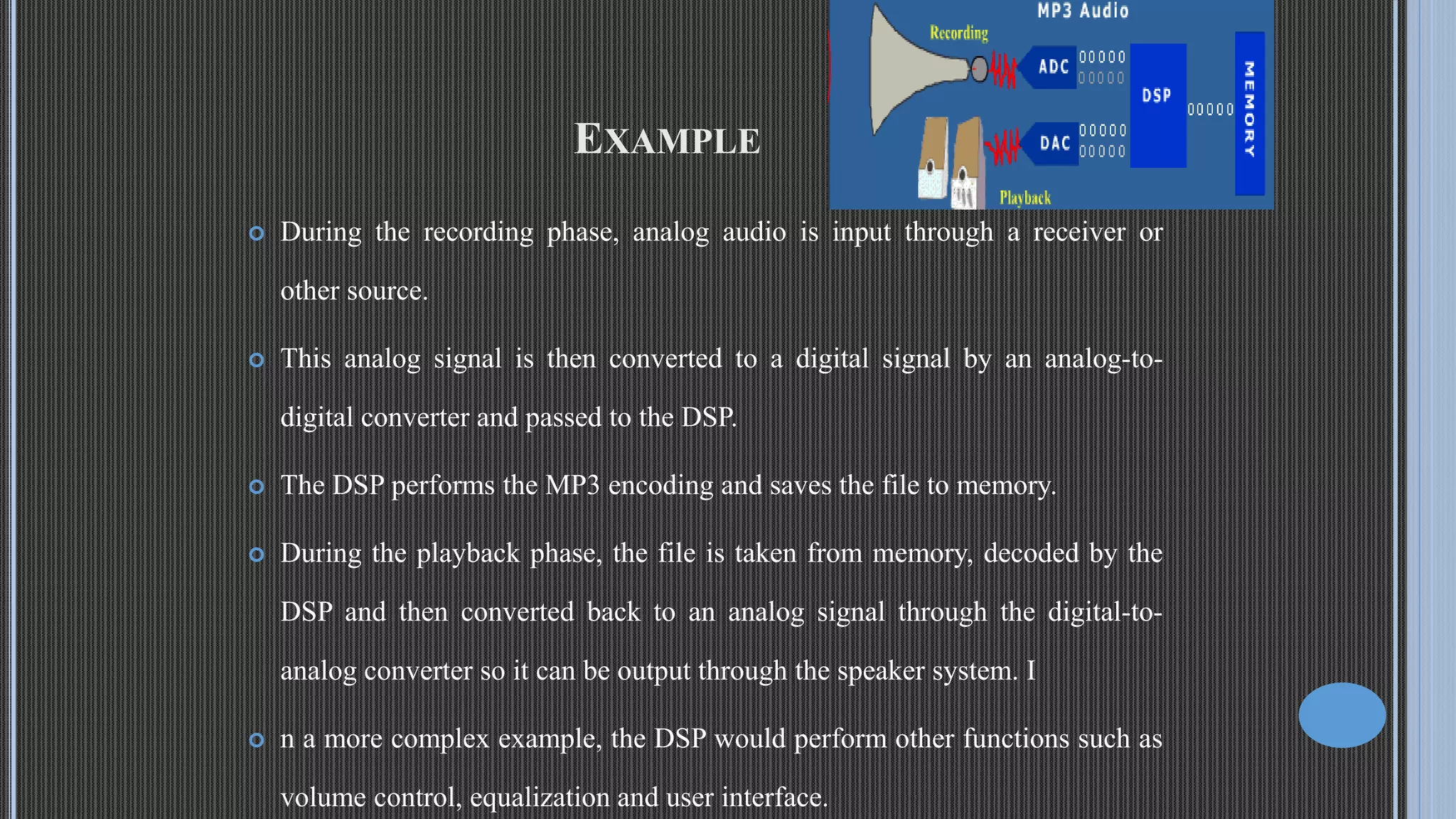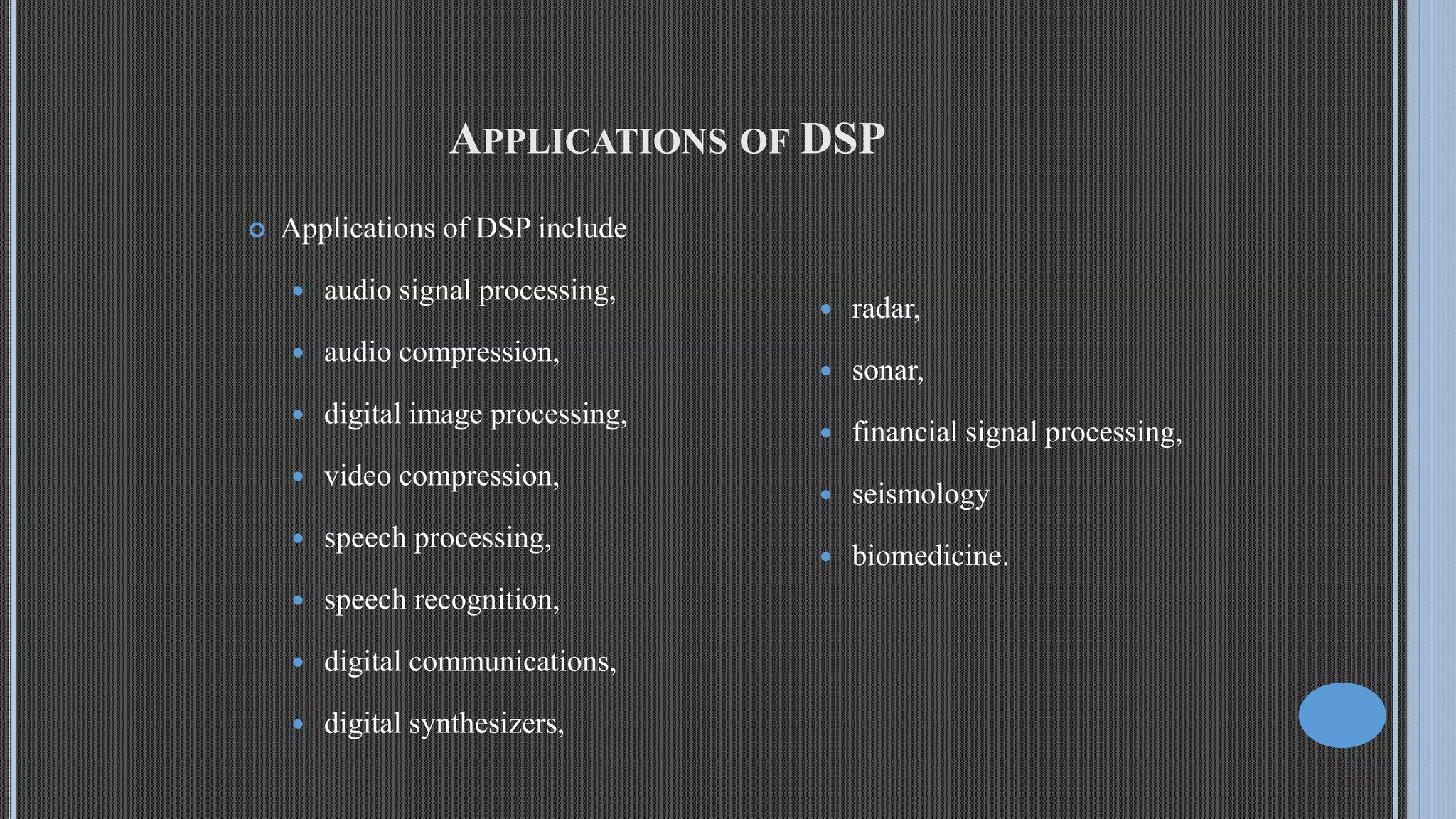Digital signal processors (DSPs) mathematically manipulate digitized real-world signals like voice and video. DSPs are designed to quickly perform operations like addition, subtraction, multiplication and division. Signals are converted to digital format by analog-to-digital converters and processed by the DSP, which then feeds the information back digitally or through digital-to-analog conversion. DSPs are used in applications like audio and video compression, speech recognition, digital communications, and financial and biomedical signal processing.






